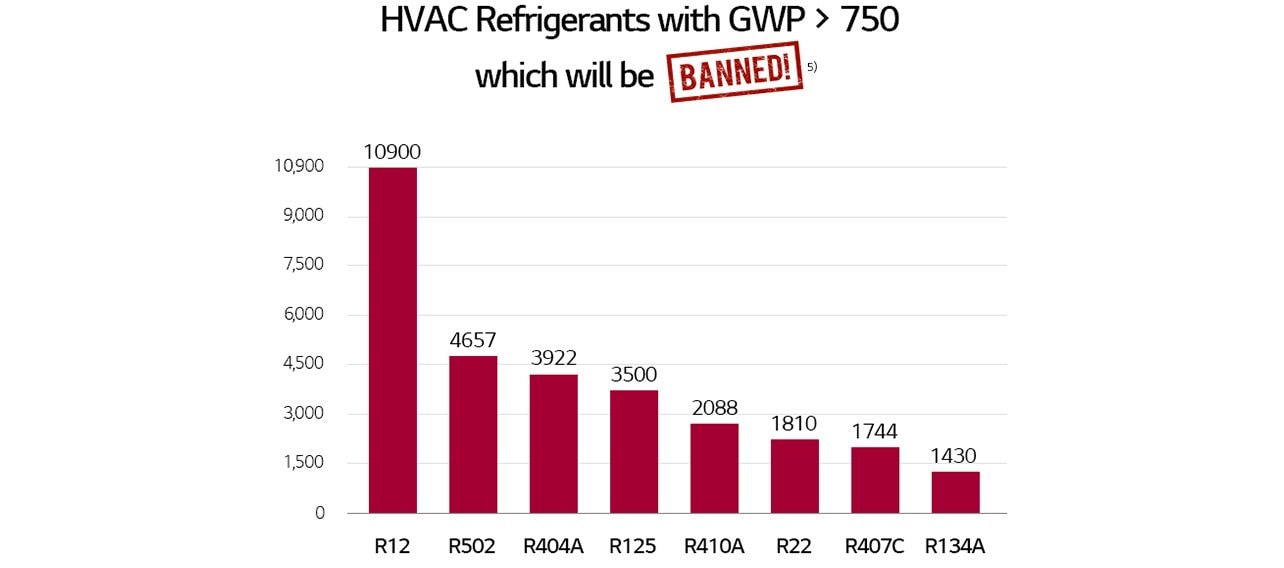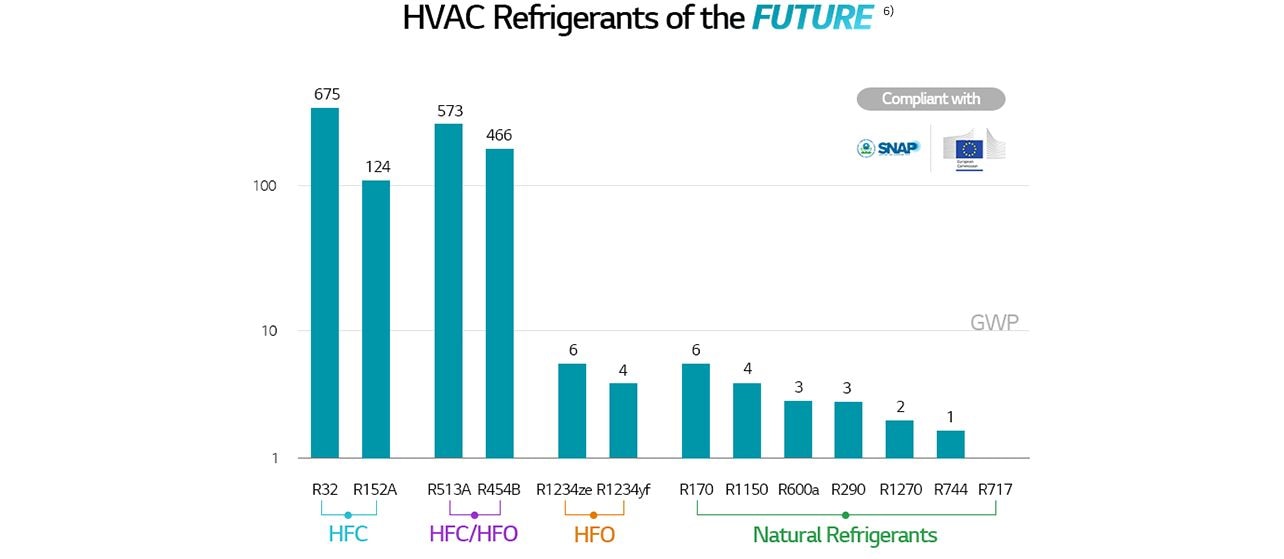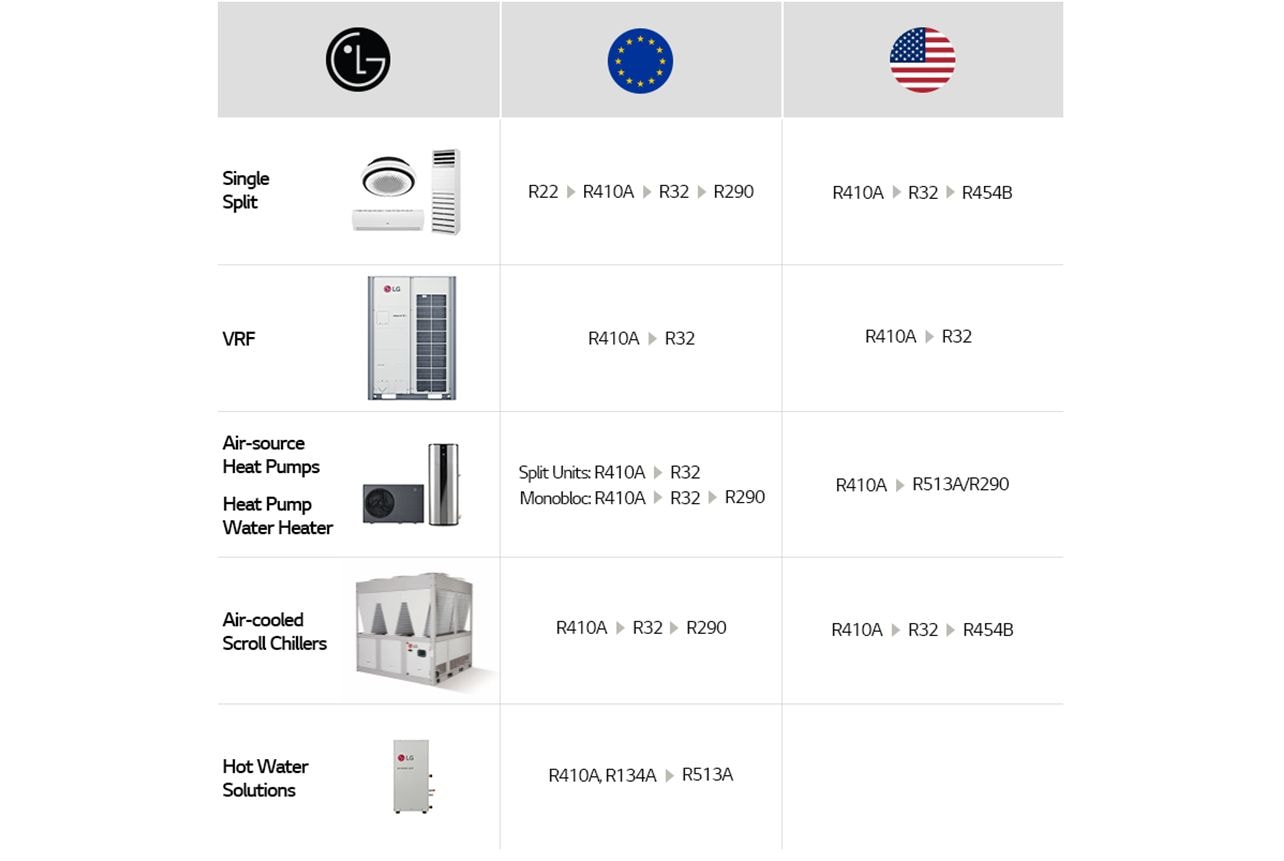Regulations and policies concerned with the environment are always global, not limited to one single industry or region.
The European Union's F-Gas Regulation is a testament to its commitment to environmental protection. This regulation seeks to curtail the use of fluorinated greenhouse gases, commonly known as Hydrofluorocarbons (HFCs) by 95% by 2030 compared to 2015, going down to zero by 2050.1)
1) European Commission, ‘Commission welcomes agreement on new legislation to prevent 500 million tonnes of emissions from fluorinated gases and ozone depleting substances’ (2023),https://ec.europa.eu/commission/presscorner/detail/en/ip_23_4781
Starting in 2027, plug-in and other self-contained systems under capacity 50kW will be prohibited from using F-gases with a Global Warm Potential (GWP) of 150 or more. Additionally, single-split systems containing less than 3 kilograms of F-gases with a GWP of 750 or more will be banned in 2025.2)
2) https://www.rehva.eu/rehva-journal/chapter/update-on-the-f-gas-regulation-negotiations-the-shift-to-very-low-gwp-refrigerants
Further restrictions will be implemented, Air-to-Water Split systems will be limited from 2027 and Air-to-Air Split Systems from 2029 to using F-gases with a GWP below 150. All split systems with a capacity of 12 kW or more are limited to using F-gases with a GWP below 750 from 2029.*
* According to the recent announcement of the F-gas regulation revision, the final agreement has not been concluded.
Across the Atlantic, North America has been equally proactive. The EPA’s (Environmental Protection Agency) SNAP (Significant New Alternative Policy) program set forth clear guidelines to phase out ozone-depleting substances. The EPA is mandated to reduce the production and usage of HFCs by 85% by 2036.3)
Starting in 2025, the EPA will prohibit the sale of new domestic and commercial air conditioning and heat pump equipment that utilizes refrigerants with GWP of 750 or higher. This ban will extend to VRF systems on January 1, 2026. For air conditioning chillers, the ban is proposed to take effect even sooner, starting on January 1, 2024.4)
3) EPA’s Proposed Refrigerant Ban Prompts HVAC Industry Response,
https://www.achrnews.com/articles/152969-epas-proposed-refrigerant-ban-prompts-hvac-industry-response#:~:text=The%20rule%20requires%20a%20700,to%20comply%20with%20the%20restrictions.
4) US EPA considers R410A ban from 2025, https://www.coolingpost.com/world-news/us-epa-considers-r410a-ban-from-2025/




